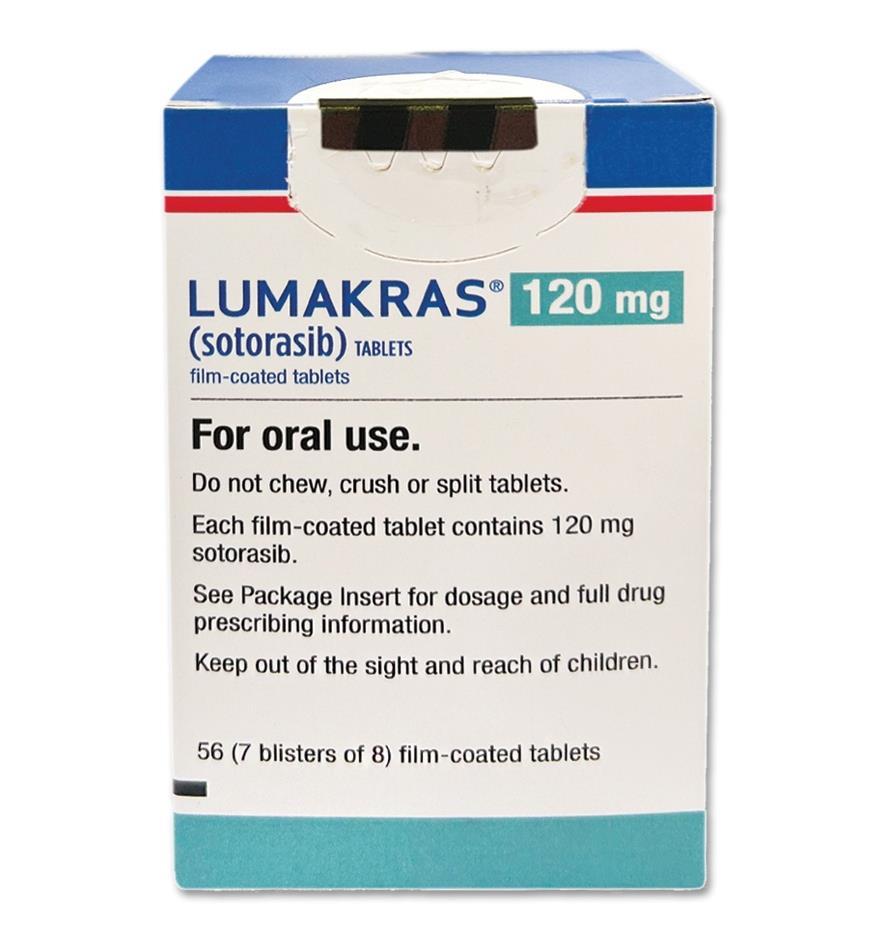Introduction
Amgen Inc., one of the leading biopharmaceutical companies, is known for its focus on groundbreaking scientific advancements in the healthcare sector. Over the years, the company has made significant strides, particularly in oncology, where it has introduced a number of innovative treatments. Among its key products, Lumakras (Sotorasib), a targeted therapy for non-small cell lung cancer (NSCLC), has shown promising results. This article delves into the strategies adopted by Amgen to boost Lumakras (Sotorasib) Market position, along with the emerging innovations and developments that are shaping the drug's trajectory.
Amgen Inc.'s Strategy for Market Growth
Amgen's strategic direction is centered on leveraging its robust research and development pipeline, focusing on high-value therapeutic areas such as oncology, cardiovascular disease, and inflammation. The company is known for its heavy investment in cutting-edge biotechnologies, including monoclonal antibodies, gene therapies, and RNA-targeted therapies.
1. Focus on Precision Medicine: Amgen has consistently prioritized personalized medicine, where treatments are tailored to the genetic makeup of individual patients. This strategy aligns perfectly with the development of Lumakras (Sotorasib), a KRAS G12C inhibitor that targets a specific genetic mutation in non-small cell lung cancer. By zeroing in on a genetic mutation that was previously considered undruggable, Amgen has made a significant breakthrough in treating this challenging cancer subtype.
2. Collaborations and Partnerships: Amgen has engaged in strategic partnerships with other biotechnology and pharmaceutical companies to expand its research capabilities and market reach. These partnerships are integral to the company’s strategy, enabling it to access new technologies, enhance its R&D pipeline, and ensure that its innovations reach a broader patient population.
3. Global Expansion: Amgen's global presence is expanding, and the company is continually looking for ways to access untapped markets. This strategy not only increases the reach of Lumakras (Sotorasib) but also strengthens Amgen’s position in the competitive global biopharma landscape.
Lumakras (Sotorasib): Emerging Innovations in Oncology
Lumakras (Sotorasib) is a key player in Amgen’s oncology portfolio, representing a new frontier in cancer treatment. It was the first FDA-approved drug targeting the KRAS G12C mutation in patients with non-small cell lung cancer. The approval marked a significant milestone in the treatment of lung cancer, as KRAS mutations have historically been difficult to target with traditional therapies.
1. Scientific Breakthrough: The development of Lumakras (Sotorasib) was a breakthrough in oncology because of the KRAS G12C mutation’s role in driving cancer. Prior to Lumakras, targeting KRAS mutations had been a nearly insurmountable challenge. This innovation has opened up new possibilities for treating patients with this specific mutation, who were previously limited to conventional therapies.
2. Targeted Therapy Approach: Lumakras works by irreversibly binding to the KRAS G12C mutant protein, inhibiting its oncogenic activity. This precision-targeted approach minimizes harm to healthy cells, thereby reducing the side effects that are often associated with traditional cancer treatments like chemotherapy. The specificity of the treatment increases its effectiveness in the right patient population.
3. Clinical Trials and Efficacy: Clinical trials have demonstrated Lumakras’s efficacy in patients with KRAS G12C-mutated non-small cell lung cancer, especially in those who have already undergone prior lines of treatment. Data from these trials show promising progression-free survival rates, which further bolster the potential of the drug in treating a difficult-to-treat cancer type.
Market Developments for Lumakras (Sotorasib)
1. Regulatory Approvals and Expansion: After receiving FDA approval in 2021, Lumakras (Sotorasib) has seen its indications expanded to other cancers that harbor the KRAS G12C mutation. Amgen is actively working with global health authorities to ensure the drug is available to patients worldwide. In addition to lung cancer, there are ongoing studies to investigate the drug’s efficacy in other cancer types such as colorectal cancer and pancreatic cancer.
2. Combination Therapies: Amgen is exploring the potential for combining Lumakras with other cancer treatments, such as immune checkpoint inhibitors or other targeted therapies, to improve patient outcomes. Combination therapies are often more effective in treating complex cancers, and Amgen’s strategy aims to increase the breadth of Lumakras’s therapeutic utility.
3. Patient Access and Support Programs: To ensure broader access to Lumakras, Amgen has implemented various patient assistance programs. These initiatives aim to reduce the financial burden on patients and ensure that the drug reaches those who need it most, regardless of their financial situation. This aspect of Amgen’s strategy is particularly critical in expanding the drug’s market penetration.
Conclusion
Amgen Inc. has positioned itself at the forefront of biopharmaceutical innovation, with Lumakras (Sotorasib) serving as a testament to its commitment to advancing cancer care. Through its strategic focus on precision medicine, collaborative partnerships, and global expansion, Amgen is setting the stage for continued success in the oncology market. The innovations behind Lumakras, including its targeted approach and promising clinical data, highlight its potential to transform the treatment landscape for non-small cell lung cancer and other cancers. As Amgen continues to evolve, the company's emphasis on innovation, patient access, and global reach will undoubtedly ensure its leadership in the rapidly evolving oncology field.





Comments